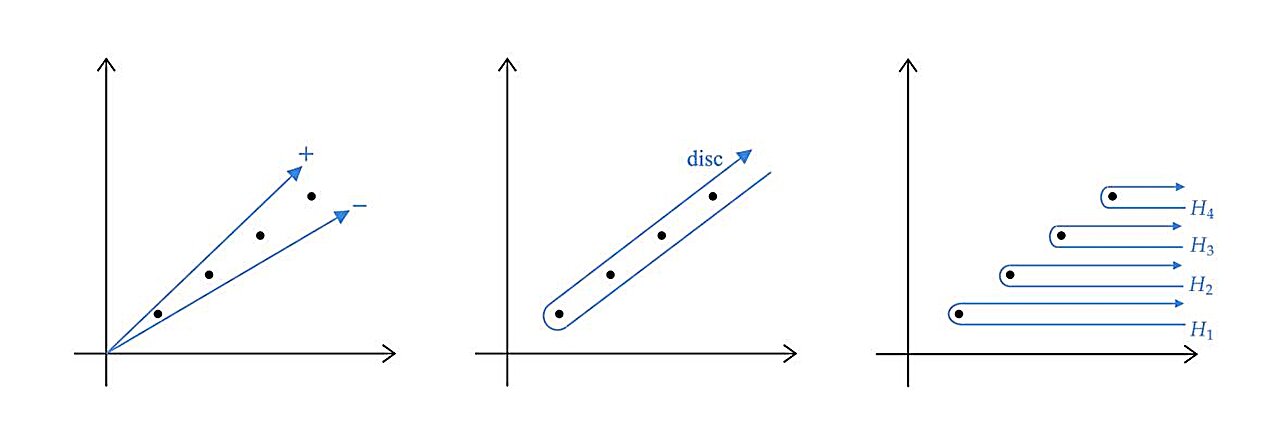Burrell plane Bϕ. credit: SciPost Physics (2024). DOI: 10.21468/SciPostPhys.16.4.103
x to close
Burrell plane Bϕ. credit: SciPost Physics (2024). DOI: 10.21468/SciPostPhys.16.4.103
In the quantum world, processes can be divided into two distinct classes. One class, the so-called “chaotic” phenomena, is relatively easy to both experiment with and mathematically calculate. Examples abound: the light emitted by atoms, the energy produced by solar cells, the states of qubits in a quantum computer.
These quantum phenomena depend on Planck’s constant, a fundamental constant of nature that determines how the quantum world differs from our large-scale universe, but in a simple way. Despite the ridiculous smallness of this constant—expressed in daily units of kilograms, meters, and seconds, it takes a value starting at 34 decimal places after the comma—the fact that Planck’s constant is not exactly zero is sufficient to account for such quantum effects. .
Then, there are “non-perturbative” phenomena. One of the best known is radioactive decay: a process in which, due to quantum effects, elementary particles can escape the gravitational force that binds them to the atomic nucleus. If the universe were “classical”—that is, if Planck’s constant were exactly zero—it would be impossible to overcome this gravitational force.
In the quantum world, decay does occur, but still occasionally. For example, a uranium atom takes an average of more than four billion years to decay. The collective name for such rare quantum events is “tunneling”: for the particle to escape, it must dig a “tunnel” through the energy barrier that keeps it bound to the nucleus. A tunnel that takes billions of years to dig and makes Shawshank Redemption look like child’s play.
Mathematics to the rescue
Mathematically, non-perturbative quantum effects are much more difficult to describe than their perturbative cousins. However, in the century since quantum mechanics has existed, physicists have found many ways to deal with these effects and to accurately describe and predict them.
“Still, on this hundred-year-old problem, there was work left to be done,” says Alexander van Spandonk, one of the authors of the new paper. The description of tunneling phenomena in quantum mechanics required greater unification—a framework in which all these phenomena could be described and investigated using a single mathematical structure.
Surprisingly, such a structure was found in 40-year-old mathematics. In the 1980s, the French mathematician Jean Eckel developed a framework he called resurgence, and it aimed to do just that: structure non-perturbative phenomena.
So why did it take 40 years for the natural combination of Eckel’s formalism and the application of tunneling phenomena to reach its logical conclusion?
“Eckal’s original articles were long—more than 1,000 pages in all—very technical and published only in French,” explains another author, Marcel Wenk. As a result, it took until the mid-2000s for a significant number of Physicists began to learn about this “toolbox” of revival from the articles.
“At first, it was mostly used for simple toy models, but of course the tools were also tested on real quantum mechanics. Our work takes these developments to their logical conclusion.”
Beautiful structure
The conclusion is that one of the tools in Écalle’s toolbox, a “serial”, is perfectly suited to describe tunneling phenomena in essentially any quantum mechanical problem, and it always does so in the same way. By explaining the mathematical details, the authors found that not only could all tunneling phenomena be unified into a single mathematical object, but that certain “jumps” in the magnitude of their contribution could be described—an effect known as the Stokes effect. “phenomenon
Van Spaendonck says: “Using the description of the Stokes phenomenon, we were able to show that some of the ambiguities that plagued the ‘classical’ methods of calculating non-perturbative effects – infinitely many, in fact – were all eliminated in our method. Structure The infrastructure changed, even more beautiful than we expected at first.
“The series describing quantum tunneling split up or ‘factorize’ in a surprising way: into a ‘minimum’ series describing the main tunneling phenomena that exist in essentially every problem of quantum mechanics, and a body we called . “Intermediate series” that describe more details about the problem and depend, for example, on the degree of symmetry of a particular quantum arrangement.”
With this mathematical structure fully understood, the next question is, of course, where the new lessons can be applied and what physicists can learn from them. For example, in the case of radioactivity, some atoms are stable while others decay. In other physical models, the lists of stable and unstable particles may differ as one changes the settings slightly – a phenomenon known as “wall crossing”.
What the researchers have in mind is to clarify the concept of going through the wall using similar techniques. This difficult problem has been studied again by many groups in different ways, but now a similar unifying structure may be just around the corner. There is definitely light at the end of the tunnel.
The work has been published in the magazine SciPost Physics.
more information:
Alexander van Spandonk et al., Exact Moment Series for Quantum Mechanics, SciPost Physics (2024). DOI: 10.21468/SciPostPhys.16.4.103
#Quantum #Tunnel #Exact #Moment #Series #Quantum #Mechanics
